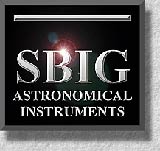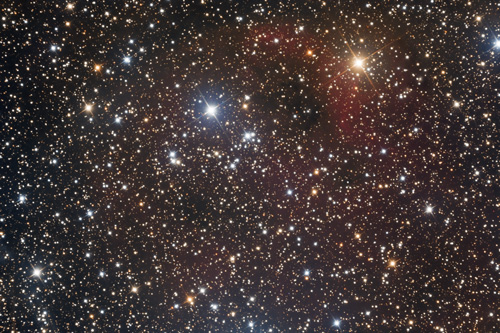| H II region | List of H II regions |
|---|---|
 Sh2-173 |
|
|
Observational data (
Epoch
J2000 ) |
|
| Constellation | Cassiopea |
| Ascension | 00 h 21 m 16 s [1] |
| Declination | +61 ° 43 '30 " [1] |
| Galactic coordinates | l = 119.4, b = -00.9 [1] |
| Distance | 8800 [2] to |
| (2700 [2] pc ) | |
| Apparent magnitude (V) | - |
| Apparent dimension (V) | 24 'x 24' |
| Physical Characteristics | |
| Type | H II region |
| Galaxy of belonging | Milky Way |
| Dimensions | 76.9 [2] to |
| (23.6 [2] pc ) | |
| Other designations | |
| LBN 593 [1] | |
Sh2 -173 is an emission nebula visible in the constellation of Cassiopeia .
It identifies about 3 ° to the NNE brilliant β Cassiopeiae (Caph), the star that represents the westernmost part of the "W" of Cassiopeia, and is located just southwest of the 12 Cassiopeiae , a blue-white star of the fifth magnitude . Due to its declination strongly northern, his observation is possible in particular regions of the ' northern hemisphere , which is presented circumpolar to the subtropical latitudes, while on the ' southern hemisphere its visibility is reduced and restricted to tropical regions. [ 3]
This is an H II region with a diameter of 77 light years , which is about 2700 parsecs (about 8800 light years) away. It is located on the arm of Perseus , one of the major spiral arms of the Milky Way , in correspondence of ' OB association Cassiopeia OB5, which includes some open clusters and nebulae, as Sh2-172 and Sh2-177 , [4] in contact with a large super-bubble diameter of 380 parsecs, created by the stellar wind of massive stars of the association. [5] contains a large number of young stars, of which there were at least seven of the main responsible for the ionization of the gas , the hottest of which is cataloged as BD +60 39, a blue star of spectral class O9V, would be part of a large region of star formation located near the association Cas OB5, which are also connected nebulae nearby, [6] as well as open clusters NGC 103 and the source of radio waves KR 98, plus the dark nebula LDN 1282. [7]
Notes [ edit ]
- ^ a b c d Simbad Query Result . Retrieved on October 24, 2009 .
- ^ a b c d Paladini, R.; Burigana, C., Davies, RD, Maino, D.; Bersanelli, M., Cappellini, B., Platania, P., Smoot, G. (January 2003). A radio catalog of Galactic HII regions for applications from decimeter to millimeter wavelengths . Astronomy and Astrophysics 397 : 213-226. DOI : 10.1051/0004-6361: 20021466 . Retrieved on October 25, 2009 .
- ^ A variation of 62 ° N is at an angular distance from the north celestial pole to 28 °, which means that north of 28 ° N the object appears circumpolar, while to the south of 28 ° S, the object is not never rises.
- ^ Galaxy map in Result for Sh2-172 . Retrieved on May 7, 2009 .
- ^ Moor, A., Kiss, Cs. (January 2003). Multiwavelength Study of the Cas OB5 Supershell . Communications of the Konkoly Observatory, Hungary Proceedings of the conference: 'The interaction of stars with Their environment II.', Held at the Eötvös Loránd University, Budapest, Hungary: 149-152. Retrieved on May 7, 2009 .
- ^ Russeil, D., Adami, C., Georgelin, YM (July 2007). Revised distances of Northern HII regions . Astronomy and Astrophysics 470 : 161-171. DOI : 10.1051/0004-6361: 20066051 . Retrieved on May 11, 2009 .
- ^ Avedisova, VS; Kondratenko, GI (1984). Exciting stars and the distances of the diffuse nebula . Nauchnye Informatsii 56 : 59. Retrieved on October 31, 2009 .
References [ edit ]
- Mária Kun, Star Forming Regions in Cassiopeia (pdf), Handbook of Star Forming Regions, Volume I: The Northern Sky ASP Monograph Publications, Bo Reipurth, December 2008, p. 24. ISBN 978-1-58381-670-7
- Tirion, Rappaport, Lovi, Uranometria 2000.0 - Volume I - The Northern Hemisphere to -6 ° , Richmond, Virginia, USA, Willmann-Bell, inc., 1987. ISBN 0-943396-14-X
- Tirion, Sinnott, Sky Atlas 2000.0 - Second Edition , Cambridge, USA, Cambridge University Press, 1998. ISBN 0-933346-90-5






